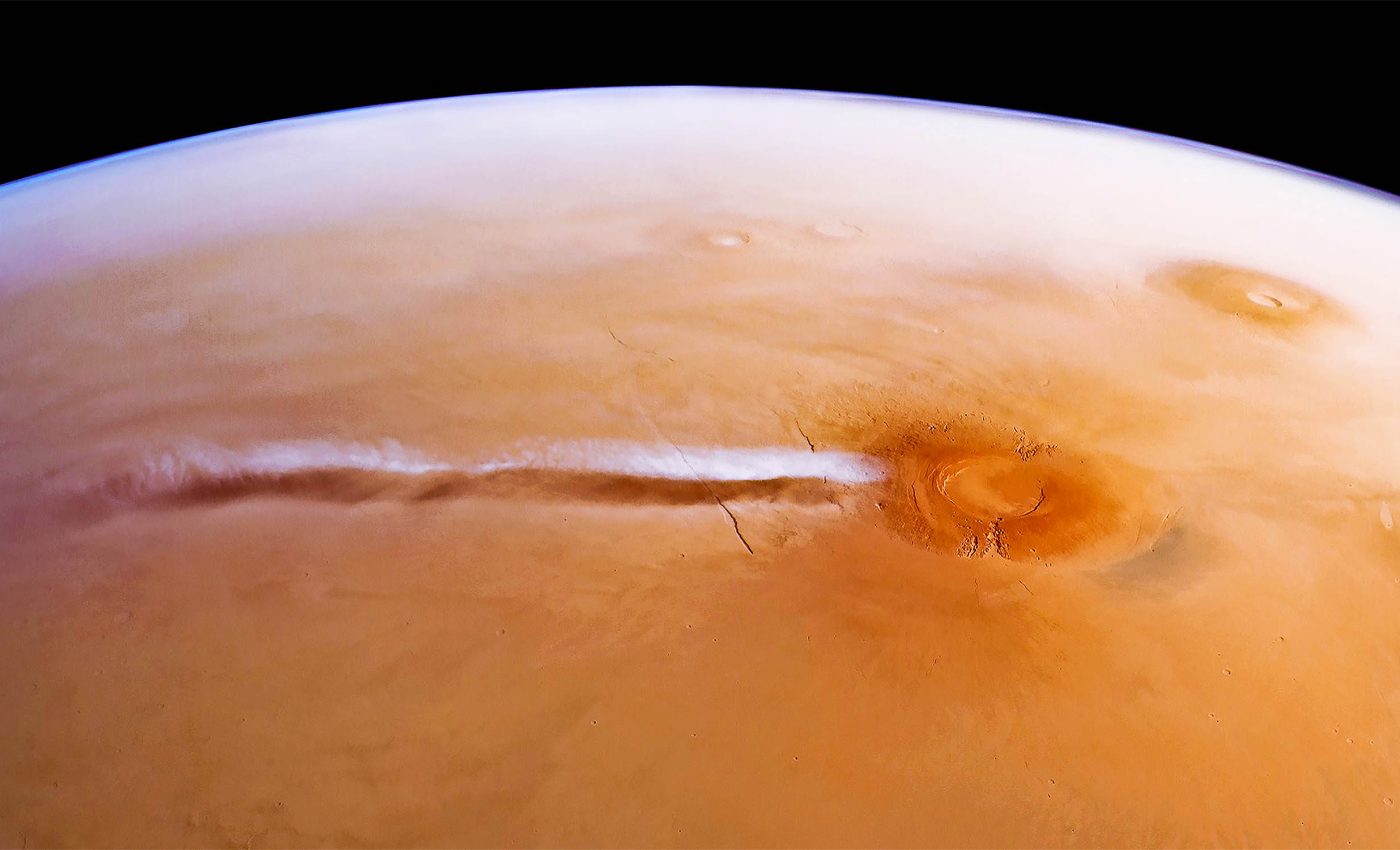
Mars cloud photos taken over 20 years released online in stunning new Atlas
Every cloud has a silver lining, even on Mars. For any space enthusiast or sky observer fascinated by the Red Planet’s atmospheric beauty, scientists have invented a comprehensive and browsable image database containing two decades worth of Martian sky-splendor.
Mars Cloud Atlas
The research begins in Berlin, at the German Aerospace Centre (DLR), where this database or the “Mars Cloud Atlas,” as it is fondly called, was created.
The goal? To better comprehend the Martian atmospheric conditions, the origins of specific features, and most importantly, to answer what these “tell-tale” signs reveal about not just Mars, but also the climates of other heavenly bodies in our solar system.
The Atlas, which was presented by Daniela Tirsch of DLR at the Europlanet Science Congress in Berlin, is free for public access and features brilliant photos of clouds, storms and more, across the Martian skies.
Mars Express continues to dazzle
The images in the Cloud Atlas are indeed a sight to behold, captured over 20 years by the High Resolution Stereo Camera (HRSC) instrument.
For two decades, HRSC has been aboard the European Space Agency’s Mars Express spacecraft, orbiting the red planet since 2005, recording atmospheric conditions.

Despite Mars having a considerably thin atmosphere, the HRSC has done a fascinating job of capturing numerous cloud formations and dust storm phenomena.
These formations are made up of water and carbon dioxide ice crystals, alongside dust particles.
Mars Express — the basics
The Mars Express spacecraft is packed with cool scientific instruments aimed at studying Mars from orbit, focusing on its atmosphere, surface, and what lies beneath.
Its main goal? To uncover clues about Mars’ past environment, especially when it comes to water, to figure out if the planet ever had conditions that could support life.
Mars Express has sent back some amazing high-resolution images of the Martian surface, showing everything from massive canyons and ancient river valleys to icy polar caps and stunning cloud formations.

Over the years, Mars Express has made some really amazing discoveries. It picked up methane in the Martian atmosphere, sparking exciting questions about the potential for microbial life hiding beneath the surface.
The mission also found evidence of liquid water under the south polar ice cap, a finding that could really change how we think about Mars’ habitability.
Almost two decades later, Mars Express is still orbiting Mars, sending back valuable data that deepens our understanding of the planet and keeps the dream of future human exploration alive.
Mesmerizing Martian spectacles
Clouds on Mars are just as diverse and fascinating as those we see in our skies on Earth, with some features unique to the Red Planet.
“One of my favorite phenomena are the beautiful ‘cloud streets’ — linear rows of fleecy clouds that develop around the huge volcanic Tharsis rise and the northern lowlands in northern spring and summer,” noted Tirsch.

“While they resemble cumulus clouds on Earth, they are formed under different atmospheric conditions. We also see impressive dust clouds that can spread hundreds of kilometers — a phenomena we luckily don’t experience on Earth.”
Mars clouds and dust
Dust plays a leading role in Mars’s atmosphere and climate. Uncommon upwelling events can lead to the formation of beige, dust-filled blobs that linger in the atmosphere.
At specific seasons, large temperature and air pressure differences can trigger stronger-than-usual winds.
These powerful gusts lift enormous amounts of dust from the Martian surface, forming clouds that, from the vantage point of giant dormant volcanoes, mimic eruption clouds.
Cyclone systems and large spiral dust storms are annual phenomena near the Martian North pole. Studying these atmospheric marvels is vital for understanding air mass circulation on Mars.
Mars cloud types
On both Mars and Earth, “gravity clouds” are common. They appear in mid-latitudes during the winter for both hemispheres.
Also, these clouds are frequently observed over the Tharsis volcanic plateau in the southern Martian winter.

A particular type of gravity cloud, the “Lee waves,” form on the downwind side of ridges, mountains and other hurdles, resulting in repeating ridge formations.
While some clouds are location and season-specific, other types like ‘twilight clouds’ can magically appear in the early morning, at any time of year, any place.
Understanding Martian weather
The HRSC Cloud Atlas, thus, is an incredible tool offering valuable insights into the physical characteristics of Martian clouds and storms, their timing and locations.
This knowledge contributes to our understanding of atmospheric dynamics and climate cycles on Mars, further providing basis for climate studies on other planets, including Earth and Venus.
Daniela Tirsch confirms that the DLR team has already used the database to create global maps that indicate the occurrence of various cloud types, based on season and location.
She also shared that Mars Express will continue its mission till at least 2026, meaning the database will keep expanding, further refining our understanding of Mars’s atmosphere.
Delightfully, papers on the database and its scientific applications are already underway.
Explore the Martian Cloud Atlas for amazing Mars data.
—–
Like what you read? Subscribe to our newsletter for engaging articles, exclusive content, and the latest updates.
Check us out on EarthSnap, a free app brought to you by Eric Ralls and Earth.com.
—–













